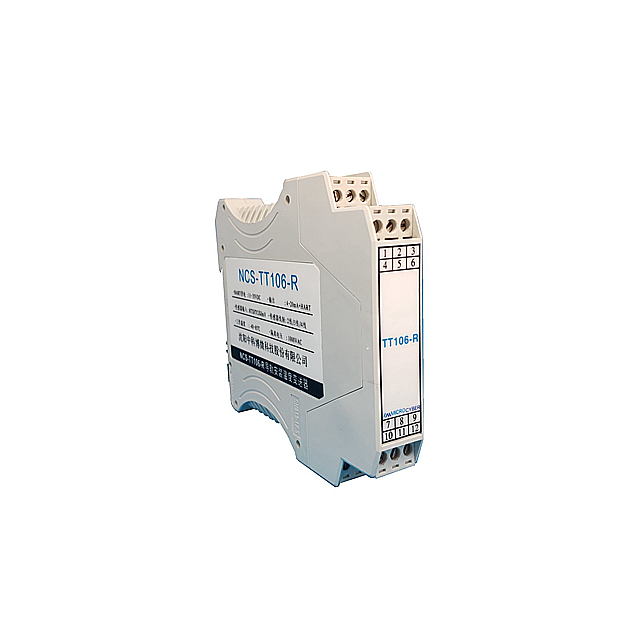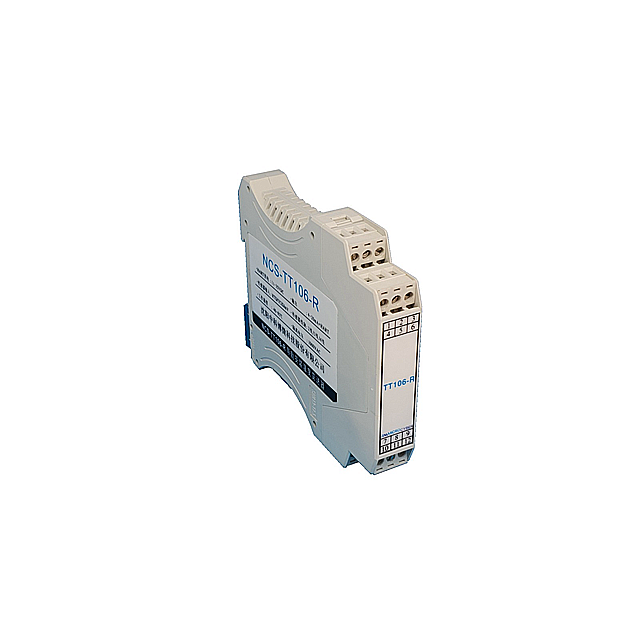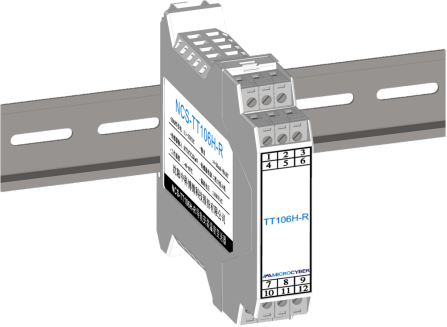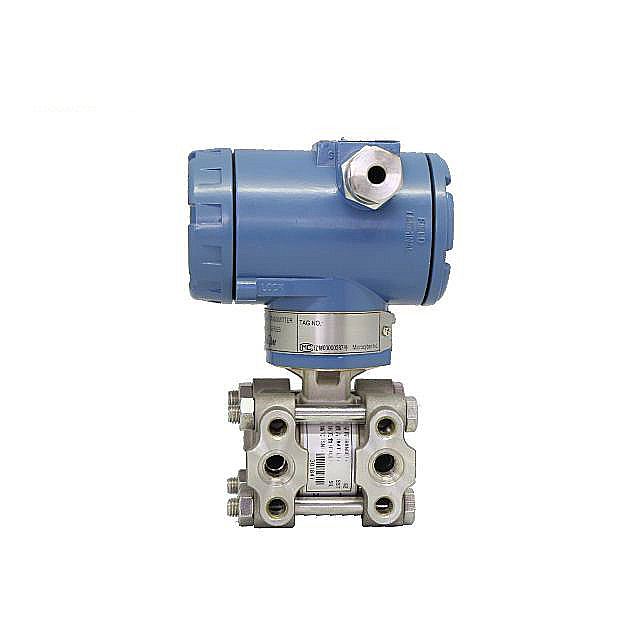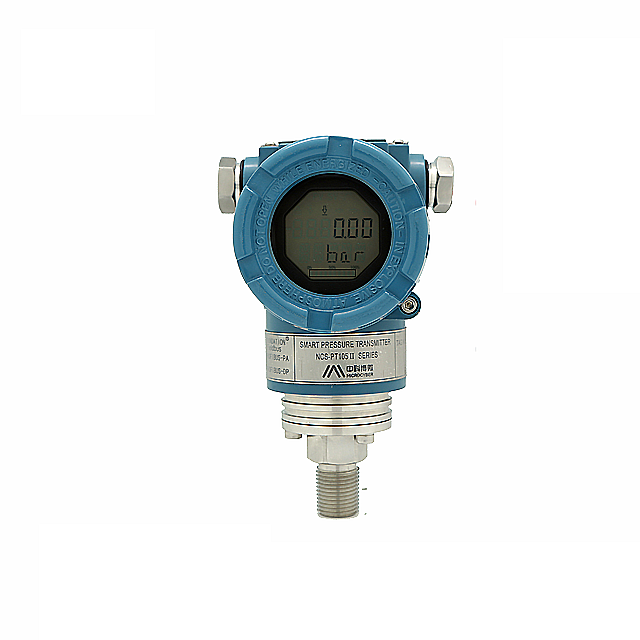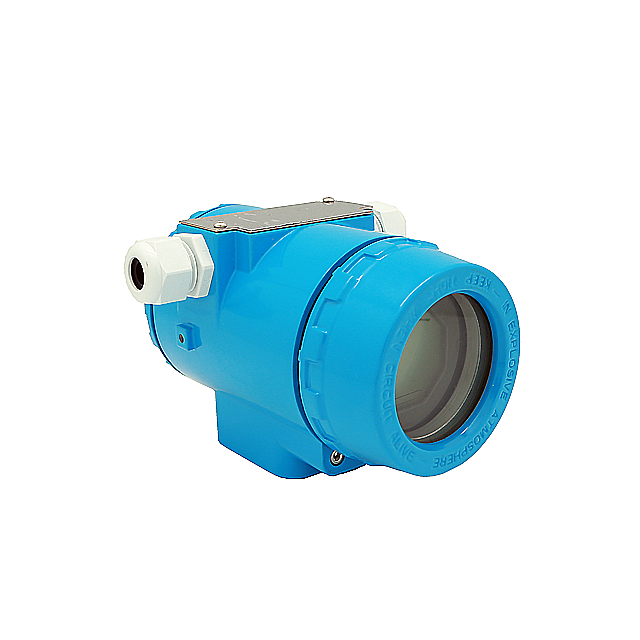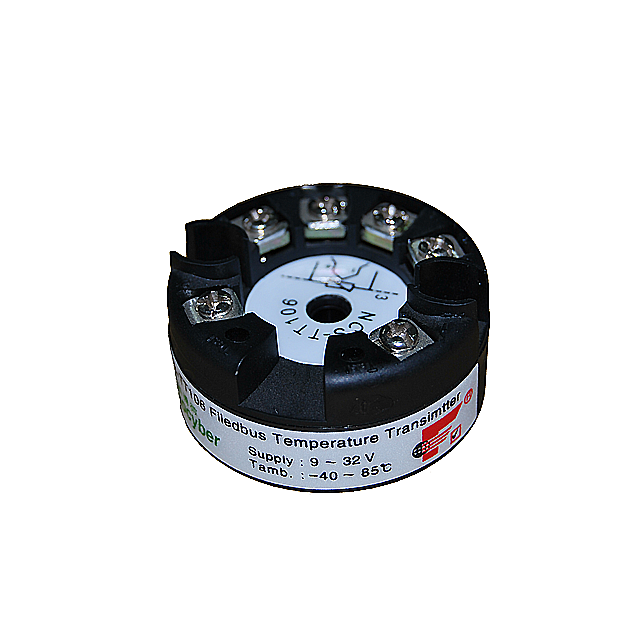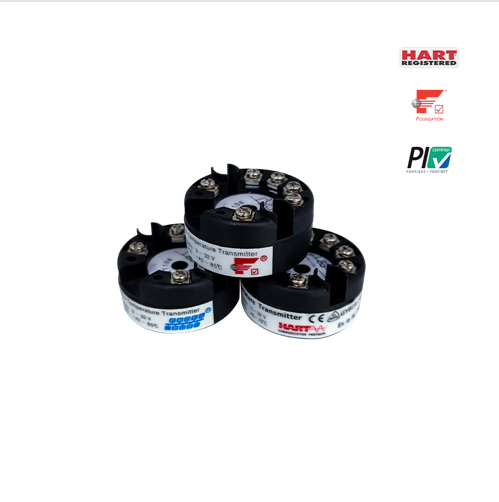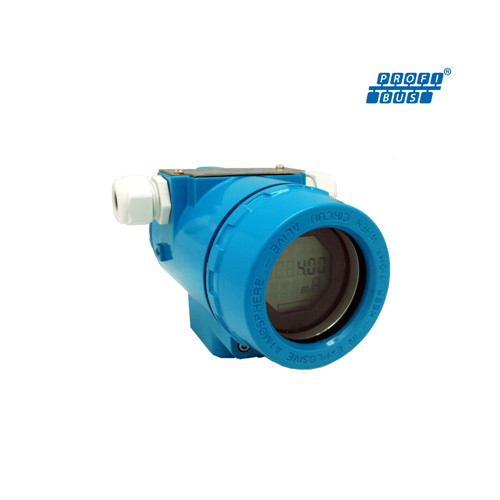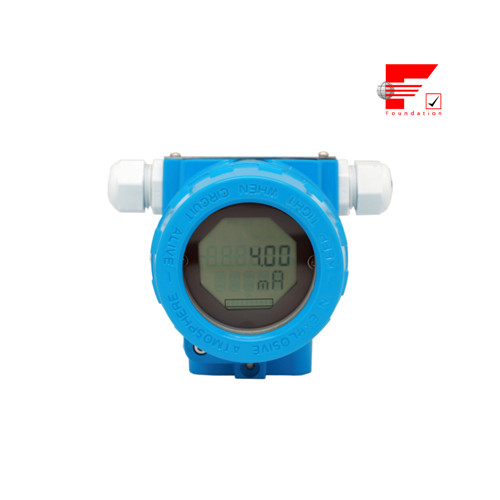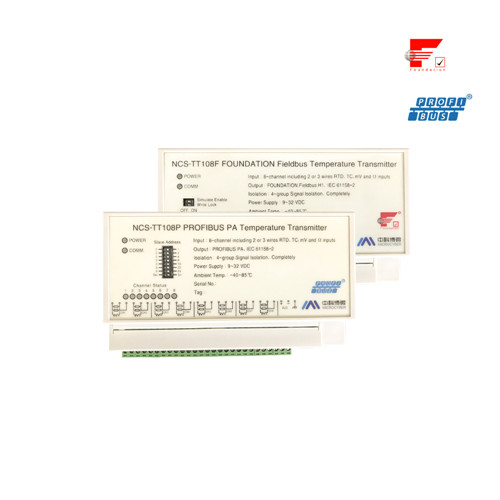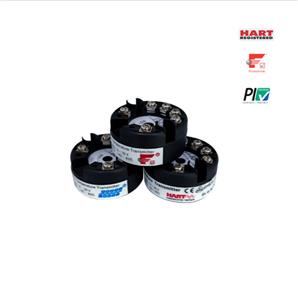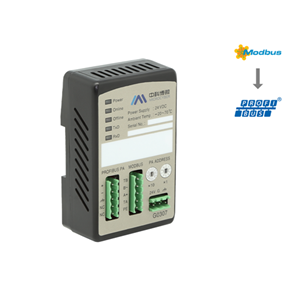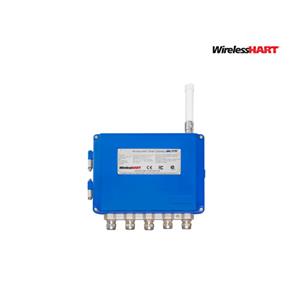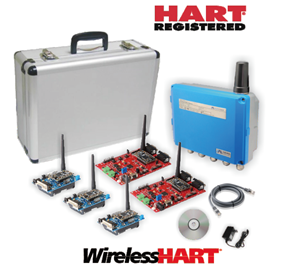HART Double Channel Din Rail Temperature Transmitter

- Microcyber
- China
- In Stock
- 500 Sets/Month
HART Double Channel Din Rail Temperature Transmitter(NCS-T106H-R) provides a flexible and reliable solution for temperature measurement.As a high-precision transmitter, cns-tt106h-r is designed for your most demanding applications.HART communication converts different types of input signals into 4~20mA analog output signals.
1. Support 2-wire 4-20 mA+HART output
2. Support 2-channel sensor input
3. Support 4 types of thermal resistance and 8 types of thermocouple signals
4. Inputs for RTD in 2-wire, 3-wire and 4-wire
5. The cold junction compensation accuracy of voltage signal can reach ±0.15 ℃
6. High precision (better than grade 0.1), low temperature drift (better than ±50ppm/℃ )
7. Comply with HART 7
HART Double Channel Din Rail Temperature Transmitter: The outstanding performance of HART Double Channel Din Rail Temperature Transmitter is reflected in signal reliability, long-term stability, high accuracy and advanced diagnostic functions (important in critical processes), which minimize the risk of use.
Din rail temperature transmitter with dual channel input. Channel 1 can connect up to 4 lines of RTD, channel 2 can connect up to 3 lines of RTD, and channel 1 and channel 2 can be connected to TC signal at the same time.
HART Double Channel Din Rail Temperature Transmitter Features
Dual channel input;
4-20ma /HART agreement (7th edition);
Universal input signals, thermal resistance (RTD), thermocouple (TC), resistance, and voltage signals;
A variety of sensor wiring, parameter setting simple and convenient;
High reliability, long - term stability, high measurement accuracy and advanced diagnostic functions;
HART Double Channel Din Rail Temperature Transmitter Parameters
Basic Parameter
Specification
Input:
Pt100, Pt1000, Cu50, Cu100, 0~500Ω, 0~4000Ω
B, E, J, N, K, R, S, T There are Eight Kinds of Graduated Thermocouples
-100mV~+100mV Voltage Signal
Output: Single 2-Wire Device, Using 4-20ma /HART, Has a Linear Relationship with the INPUT
Power Supply: 11~35VDC
Number of Channels: Two-Channel
RTD Wiring Mode: 2-Wire、3-Wire、4-Wire
Temperature Limit: -40~85℃
Humidity Limit: 0-95%RH
Starting Time: ≤5s
Update Time: 0.8~1.3s It Depends on the Type of Sensor and the Wiring
Shell Protection Level: IP20 (Terminal IP00 )
Isolation Voltage: 1000VAC
The Power Influence: ±0.005%/V
EMC: GB/T 18268.1-2010
Failure Warning: linear Output:3.8 ≤ I ≤ 20.8
Limit Failure: 21.75 ≤ I ≤ 23
The Lower Limit of Failure: 3.5 ≤ I ≤ 3.75
HART Double Channel Din Rail Temperature Transmitter Technical specification of thermal resistance
RTD precision index

Note: the RTD index test condition is 4-wire system. 2-wire and 3-wire system conforms to the above indexes after excluding the wire resistance error.
RTD Other technical indicators
Mode of Connection: 2-Wire、3-Wire、4-Wire
CMRR: ≥70dB (50Hz/60Hz )
DMRR: ≥70dB (50Hz/60Hz )
Technical specification of thermocouple
TC Precision index
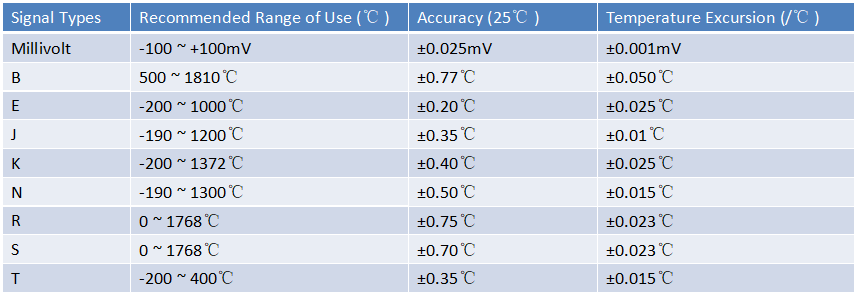
TC other technical indicators
Cold End Temperature Compensation Accuracy:
±0.5℃ (Internal Measurement )
±0.15℃ (Sensor 2 Measure,Pt100 )
CMRR: ≥70dB (50Hz/60Hz )
DMRR: ≥70dB (50Hz/60Hz )
HART Double Channel Din Rail Temperature Transmitter Mechanical Structure
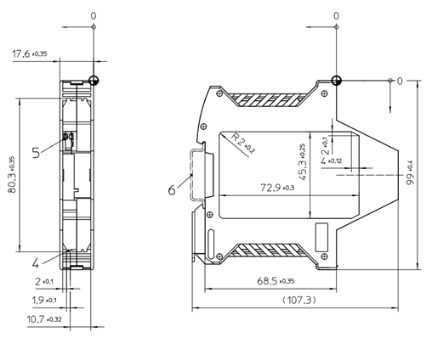

Sensor Connection
HART Double Channel Din Rail Temperature Transmitter Install the transmitter
Installation diagram
Install directly to the wall or DIN guide.
HART Double Channel Din Rail Temperature Transmitter Electrical installation
Transmitter wiring and power supply
All the power needed by the transmitter is provided by a signal line. Use regular copper wire of sufficient size to ensure that the voltage between the supply terminals of the transmitter is not less than 11VDC.
If the sensor is installed in a high voltage environment and fails or is installed incorrectly, there may be dangerous voltages on the sensor leads and transmitter terminals. Extreme care should be taken when in contact with wires and underends.
Note: do not apply high voltage to the transmitter terminal (e.g. ac line voltage). Excessive voltage may damage equipment.
HART Double Channel Din Rail Temperature Transmitter Sensor Connection

Thermocouple or millivolt input
The thermocouple can be connected directly to the transmitter.If the transmitter is mounted at a distance from the sensor, use the appropriate thermocouple extension wire.Use copper wire to complete millivolt input connection.For longer wiring, shield lines should be used.
Thermal resistance or ohmic input
The transmitter can accept a variety of thermal resistance configurations, including 2-wire, 3-wire or 4-wire configurations.If the connection distance is long, a third or fourth lead should be connected.
Influence of sensor lead resistance - thermal resistance input
When using 4-wire thermal resistance, the influence of lead resistance can be eliminated without affecting the accuracy.However, the 3-wire sensor cannot completely eliminate the lead resistance error, because it is necessary to eat the resistance imbalance between the leads.The use of the same wire on all three leads will allow for the greatest accuracy in the way the 3-wire thermal resistance is mounted.The 2-wire sensor has the biggest error, because it directly adds the lead resistance to the sensor resistance. At this time, the function of "2-wire zero calibration" is needed to eliminate the error caused by the installation method of 2-wire thermal resistance.
HART Double Channel Din Rail Temperature Transmitter FAQ
Q: Can I get a free electronic manual?
A: Yes, if you want it, please contact us.
Q: Can you provided OEM service?
A: Yes, we can, such as communication board, we can also provided fieldbus development toolkit.
Q: How to calibrateNCS-TT106H-R HART Double Channel Din Rail Temperature Transmitter?
A: Sensor input adjustment: the interpretation of input signals by the transmitter is changed digitally; output adjustment: calibrate transmitter to 4-20ma reference scale; accuracy calibration of transmitter: produces a characteristic curve.
Q: What service functions does the transmitter support?
A: Device reset: software restarts the device; restore factory default: after execution, all configuration data is restored to the factory default; save to factory value: after execution, save the current configuration to factory value.Restore factory Settings will restore the saved configuration for this time; restore factory settings: after execution, all configuration data is restored to factory state.
Hot Products--HART Double Channel Din Rail Temperature Transmitter


